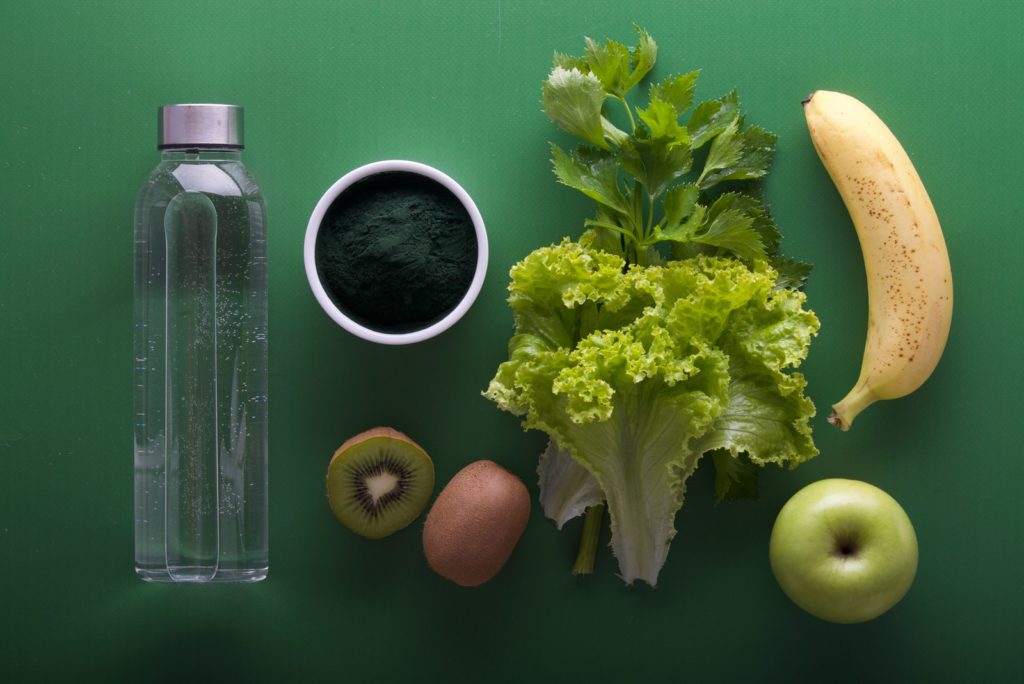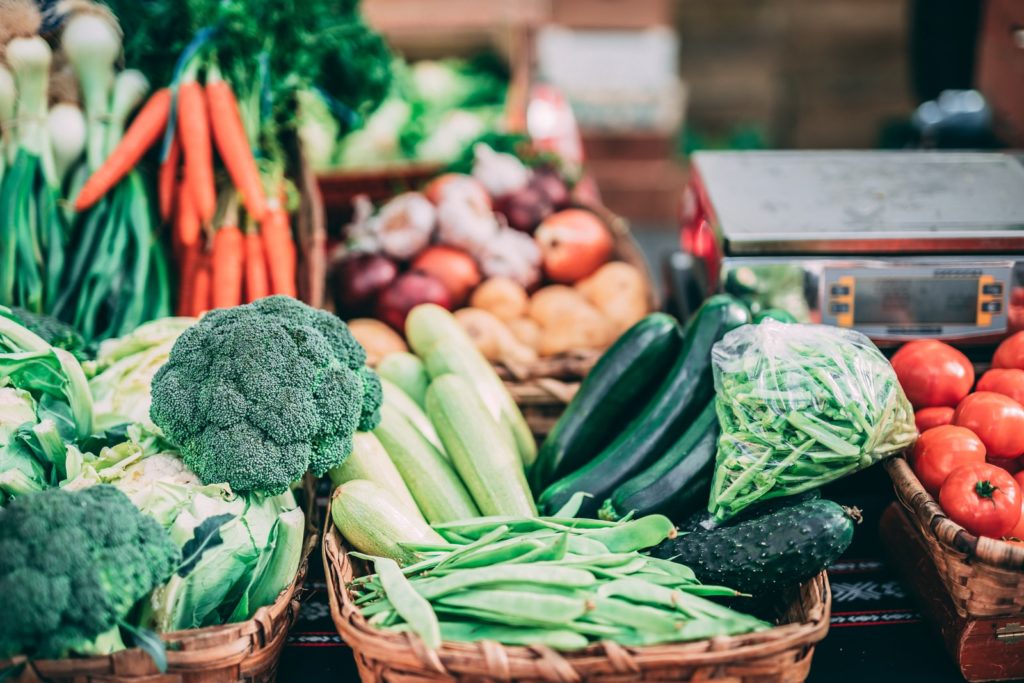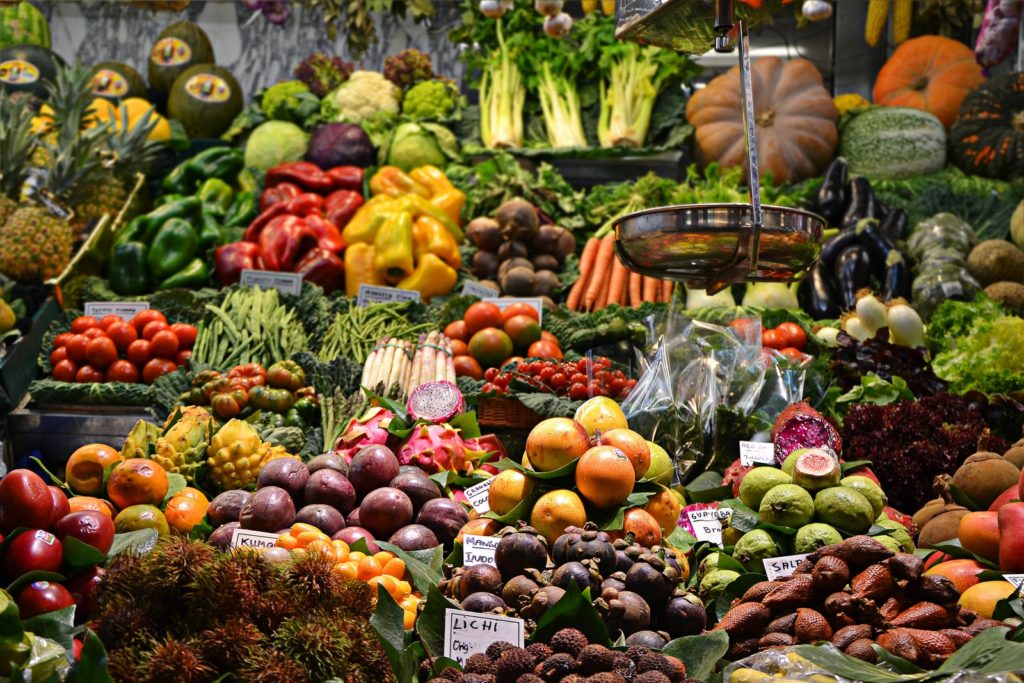Healthy Food Choices When Dieting
If you’re on a fat loss diet plan, there may be a chance that you could come to fear certain foods after so long. You’ve been conditioned to know which foods are ‘good’ and which foods are ‘bad’ and do everything you can to stay away from the bad ones and only eat the good ones.
The big problem with this good and bad thinking however is that it forms a negative association in your mind regarding certain foods in the diet. If you’re not careful, this could lead to eating disorders over time, which are very serious and could require extensive treatment to overcome.

Take a look at some of the most important things you should remember about healthy food choices for a healthy weight loss.
Think in Terms of Healthy or Not Healthy
The very first thing that you should be doing to maintain a healthy relationship with food is think in terms of healthy or not healthy rather than good or bad. This shifts the perspective and allows you to focus on the health benefits that certain foods provide, which is a much healthier association.
Try filling your diet with the most nutritious foods that you can, not because they are low in calories but because they will do the most for you from a nutritional point of view.
Plan for Cheat Meals
Next, another thing that you should be doing is planning some cheat meals into your program. Cheat meals are great because they give you psychological relief from strict diets and help you see that eating food that’s ‘off’ your diet list won’t automatically make you gain all the fat you’ve lost right back.
This is key for maintaining that healthy relationship with food. Cheat meals should be scheduled once every week or two for maximum benefits. More frequently may not be a good idea as it could hinder progress, but making sure to get them in every so often is important.
Periodically Take Diet Breaks
Finally, the last thing to keep in mind is that you should periodically add some diet breaks as well. This is key for helping you learn your new maintenance calorie intake so you don’t start thinking that you must maintain a very low calorie intake in order to succeed with keeping the weight off.
Often what occurs is that as you progress on the diet, your metabolism slows down so you start decreasing your calorie intake further to spark more fat loss, but over time, this leads to a very low calorie intake.
Before you know it you’re scared of eating more again for fear all the weight will come rushing back on.
Diet breaks will not only help to reset and boost your metabolism, but also teach you that you can eat more food and still maintain your body weight.
So there you have the most important things to note about maintaining a healthy relationship with food while dieting. For your psychological health, this is a must.
Most Common Diet Mistakes
If you’re currently on a fat loss diet plan to lose weight, it’s important that you gain some awareness of the most common diet mistakes that far too many people are making. If you don’t fully understand the process of fat loss and make any of these vital errors, it could really cost you in terms of your progress.

Let’s take a quick look at the most important things that you must know so you can stay right on track with where you need to be.
1. Not Pairing Protein with Carbohydrates
The very first diet mistake that’s often made is neglecting to pair your carbohydrate rich foods with a protein source. Protein is the nutrient that will help to slow the release of the carbohydrates into the blood, therefore you won’t see that huge blood sugar spike followed by a crash immediately after.
If you can make sure you get a protein source with each meal and snack you eat, this will go a long way towards encouraging total body fat loss and helping you maintain steadier energy levels all day long.
2. Cutting Out Carbohydrates Entirely
Second, another big issue that you might be making is cutting out carbohydrates entirely. While some women will simply not pair them with their protein like was mentioned above, others choose to forgo them entirely.
While there’s no denying the fact that low-carb diets can produce great weight loss results, remember that your body does require carbohydrates to keep up your physical activity. If you cut out all your carbs not only will you run the risk of experiencing nutrient deficiencies, but you’ll also notice your energy level starts to plummet.
In addition to this, those who use ultra-low carb diets for extended periods of time tend to notice significant reductions in their metabolic rate and this really hinders the amount of fat loss that takes place.
Add healthy carbs into your diet in moderation. You’ll see far better results by doing so.
3. Giving in to Food Cravings Too Easily
Third, another issue is giving in to food cravings far too easily. While it’s understandable to have the odd cheat meal here and there, and that is perfectly healthy, if this is occurring far too often, it’s going to be a problem.
Instead, come up with healthier methods to satisfy that food craving. If you want ice cream, try having some low-sugar yogurt with berries instead. If you want pasta, try some spaghetti squash with dinner. When you want chocolate, trying having a chocolate protein shake.
All of these should please your taste buds without tallying up to hundreds of calories. Also, along with being creative with these smart substitutions, be sure to take steps to help reduce your appetite as well. Cravings are always stronger when you’re hungry so by using an appetite suppressant such as Phen375, you will find it’s much easier to fend off those food cravings.
4. Not Eating Regularly
Finally, the last mistake you might be making is not eating regularly enough. Many people will let themselves starve all day and then wind up binging at night because they are just too hungry to control themselves.
Instead, break your calorie intake up into six mini-meals throughout the day. This will keep those blood sugar levels stable and will prevent nighttime eating.
So make sure you keep all of these mistakes in mind as you go about your diet plan. Were you making any of them?
How to Stay Energized When Dieting?
If you’re on a fat loss diet plan, one of the things that you may be struggling with on an ongoing basis is trying to stay energized. It’s no secret that energy levels do tend to drop when consuming fewer calories, due to the fact that your body has less fuel than it would like.
But, the good news is that if you choose your foods wisely, you can increase your energy levels back up again so that you feel great as you move along with your diet.

Let’s have a look at the top energizing foods that you should be consuming.
Oats
Since carbohydrates are the primary source of preferred energy by the body, you want to avoid cutting them completely out of your diet. Instead, simply choose smarter, slower digesting sources of carbohydrates that won’t spike your blood glucose levels and cause an energy high followed by a crash.
The perfect food to help you accomplish this is oatmeal, which can be prepared a number of different ways. Oatmeal is high in fiber, low in sugar, and only takes minutes to cook.
A half cup serving (raw) only provides 180 calories total as well, so it’s easily added to almost any diet plan.
Egg Whites
The next food to be eating on your diet to help increase energy levels and ensure that you maintain your lean muscle mass is egg whites. Egg whites are great since they’re very low in calories at only 15 calories per white and contain strictly protein content.
Since getting enough protein is important for muscle repair and rebuilding, which then ensures that you feel energized after hard workout sessions, meeting your daily requirements is a must.
Egg whites make this easy.
Salmon
Next up on the list is salmon. Like egg whites, salmon is also a very rich source of protein, but in addition to that, it’s also full of healthy fats.
Healthy fats are good to have in a fat loss diet in moderation because they are going to provide a longer term source of energy that you need.
Salmon should be eaten at least twice per week on any diet plan, so have a look over your current menu and make sure it’s making an appearance.
Bananas
Bananas are another great choice for when you’re trying to increase your energy levels. Bananas are a very rich source of potassium, which is a micronutrient that is vital for proper energy levels in the body.
If you aren’t getting enough potassium in your daily diet it is quite normal to experience higher levels of fatigue, so you really want to focus on getting plenty of fresh produce, the primary source of potassium in the diet.
One banana a day will go a long way towards helping you meet your needs.
Quinoa
Finally, last but not least, don’t overlook quinoa. Quinoa is another healthy source of carbohydrate that will supply the body with long-lasting energy and is also a complete source of protein as well. For anyone who is using a vegetarian diet this tends to be far superior to having brown rice instead.
So there you have some of the top foods that you’ll want to turn to in order to boost your energy levels and feel good while you’re on your fat loss diet. Don’t overlook the benefits that fat burning supplements can provide as well as you go about your diet. When you already have your healthy diet in place, these really can take your progress up to the next level.
Fiber for Effective Weight Loss
Dietary fiber, found mainly in fruits, vegetables, whole grains and legumes, is probably best known for its ability to prevent or relieve constipation. But fiber can provide other health benefits as well, such as lowering your risk of diabetes and heart disease and promoting significant weight loss.
High fiber diet promotes weight loss through less calorie intake while you eat normal amount of food. Fiber intake ensures that you don’t get hungry and tempted to eat foods which are not a part of your diet.
So, you stop thinking of eating more all the time as you did before. Fiber foods take a long time to be chewed properly. Though this does not directly contribute to weight loss, the dieter feels as if he/she has eaten a substantial meal than the usual one.

Further, it also takes longer time to finish this meal, which in turn helps. Intake of fiber foods makes a positive contribution towards your health by aiding the food to move expeditiously through your body.
How does fiber help in weight loss?
One Swiss study determined that consuming a high-fiber meal reduced hunger more than eating a meal lows in fiber. You can find a number of sources for fiber.
Fiber makes us feel full sooner and stays in our stomach longer than other substances we eat, slowing down our rate of digestion and keeping us feeling full longer. Due to its greater fiber content, a single serving of whole grain bread can be more filling than two servings of white bread. Fiber also moves fat through our digestive system faster so that less of it is absorbed.
Studies show that people who have included fiber into their daily diets have had better weight loss results than those who have dieted without including fiber.
List of high fiber foods
- Grain, Cereal and Pasta
- Spaghetti (cooked)
- Whole-wheat (cooked)
- Bread (whole wheat or multi-grain)
- Bran (known to have the highest fiber content. Can be consumed as corn bran, wheat bran, bran flakes)
- Whole-wheat pastas
- Popcorn (air popped)
- Barley (cooked)
- Brown rice (cooked)
- Fruits
- Dates
- Apricots
- Raisins
- Strawberries
- Raspberries
- Blueberries
- Apple with skin
- Pear with skin
- Banana
- Orange
- Vegetables
- Dark green leafy vegetables like spinach is the best.
- Peas (cooked)
- Kidney beans
- Lima beans
- Carrots (raw)
- Tomato paste
- Potato (with skin or baked)
- Sweet corn (cooked)
- Dried Fruits and Nuts
- Almonds
- Pistachio
- Pecans
- Seeds
- Split peas (cooked)
- Lentils (cooked)
- Black beans (cooked)
Recommended quantity
Physicians believe you should consume anywhere from 25 to 35 grams of fiber daily, although most Americans eat 15 grams or fewer.
Simple Steps to Eat More Fiber
If you’re looking to take your fat loss results to the next level, one thing that you must be sure you’re doing is getting enough fiber in throughout the day.
Not only is fiber going to be important for helping to keep your heart healthy and your blood cholesterol levels in a good range, but fiber is also vital to increase the satiety that you get between meals.
Those who are eating low fiber diets are often going to find that they get very hungry between meals and snacks on their plan, making it that much more difficult to maintain a reduced calorie intake.

Choosing foods that will contribute a good amount of fiber to your diet daily is one of the best methods to ensure you’re getting enough.
Let’s have a look at a few simple steps that you can take to get more fiber into your daily diet.
Add Flaxseeds to Yogurt
The first way to increase your daily fiber intake is to start adding flaxseeds to your bowl of yogurt. Flaxseeds are not only a very rich source of fiber, but they’re also loaded in essential fatty acids which are imperative for good health.
Flaxseeds are going to help to control your blood sugar levels very well, so that you don’t suffer an energy crash shortly after consuming the meal.
Add Frozen Vegetables to Soups
The next way to boost your fiber intake for the day is to start adding some frozen vegetables to any soups you’re preparing.
If you’re looking for a low calorie way to add more bulk to your diet, vegetables are it. Toss in a few handfuls of frozen broccoli, cauliflower, or carrots about 2-3 minutes before the soup is finished cooking and you’ll have a nutrient packed meal in minutes.
Toss Berries into Your Protein Shake
Moving along, another great way to increase your fiber intake for the day is to add some berries into your protein shake. Blackberries especially tend to be incredibly high in fiber so if you can add a half cup in with some protein powder, skim milk, yogurt, and a few ice cubes, you’ll have a very nutrient dense shake in minutes.
Berries are also very rich in antioxidants, so will go a long way towards promoting optimal health.
Start Your Day with Bran Buds
Finally, the last quick tip to get more fiber into your day is to always try and start your day off with some bran buds. If you’re someone who doesn’t like the taste of bran buds however, not to worry. You can easily mix in half a cup with whatever other cereal you choose to eat.
You’ll hardly notice them in there but they will pack in almost 10 grams of fiber per serving.
So there you have some very simple yet highly effective ways to get more fiber into your daily diet. If you eat a fiber rich diet and then also use an appetite suppressant, hunger will no longer be something that you struggle with on your diet plan.
Can Organic Food Help Me Lose Weight Faster?
Organic foods are becoming more popular again as people realize that our bodies don’t need the extra burden of harmful chemicals. There are now a number of nutritionists and dieticians that believe that buying organic foods from sources that you can trust is the best way to promote healthy foods.

What is organic food?
Everyone ate organic food until chemical pesticides and herbicides were invented in the last hundred years or so. The label “organic” is a bit of a misnomer, since all food is chemically organic because it is carbon-based.
But organic in the context of food now means it is produced without the use of conventional pesticides and artificial fertilizers, is free from contamination by human or industrial waste, is processed without ionizing radiation or artificial food additives, and does not contain genetically modified organisms (GMO). Also, in the context of livestock, use of antibiotics or growth hormones is not allowed.
Defining organic food
Certified organic food is most commonly described as food grown and packaged without the use of chemicals, preservatives or additives. In other words, food that is either completely or at least 70% all-natural can be called as organic food.
Another way to explain it, from a bigger picture standpoint is:
“Organic food is produced through a system that is based on ecological balance and humane care for the plants, animals and people that make up the farm environment.”
But is organic food more nutritious?
In 2001, nutrition specialist Virginia Worthington published her review of 41 published studies comparing the nutritional values of organic and conventionally grown fruits, vegetables and grains. What she found was that organically grown crops provided 17 percent more vitamin C, 21 percent more iron, 29 percent more magnesium, and 13.6 percent more phosphorus than conventionally grown products. She noted that five servings of organic vegetables provided the recommended daily intake of vitamin C for men and women, while their conventional counterparts did not. today there are more studies that show the same results that Ms. Worthington concluded.
Beware, there are also studies stating that there is no difference. Again, the nutritional content is not in question; it’s the large amounts of harmful pesticides, insecticides and potential toxins they spray on the crops that make the difference.
Last but not least, considering the health benefits of eating organic foods, along with the knowledge of how conventionally grown and raised food is impacting the planet should be enough to consider paying greater attention to eating organic, today. Since most people buy their food in local supermarkets, it is good news that more and more markets are providing natural and organic foods in their stores. However, you must remember the fact at all times that there is no single key to successful weight loss.
Factors for Weight Loss
It is rather a combination of multiple factors that lead to progressive yet permanent weight loss such as:
- Eating a well-balanced (preferably organic) food diet that rich in nutrients and mineral.
- Keeping a healthy, physically active lifestyle.
Fiber-based diet pills will work even better and faster when combined with organic food. However, the good news is that even for those who find it difficult to find and consume organic food on a regular basis, diet pills work wonders because of natural appetite suppressant properties.
Fruits and Veggies for Weight Loss
We have heard it once, we have heard it a thousand time:
‘Eat your veggies’

Most of us heard this more than anything during our childhood. All you could think of as a child was when you get older, you will never eat another one again. Who needs those things anyway? I hate to break the news to you, but fruits and veggies are a very important part of our diets. You can’t live without them.
Why We Hate Vegetables
Oh you can, but you will either gain weight or feel like shit in the long run. Go a week without eating any, you will see what I mean. I guess the problem is, we tend to overcook veggies. We cook them to the point that they are either mush or they don’t have the taste they once had. This is the worst thing that you can do to them.
When you overcook a veggie, you rob of it of everything that makes it good for you. This is very foolish and a waste of money. A person should eat 5-10 servings of veggies per day. I know you have had that pounded into your head while you were at school. It sucks to learn they were actually telling the truth, doesn’t it?
What is the Size of a Serving?
Before you get all bent out of shape, let’s talk about how big a serving really is. A medium-sized fruit or veggie is one serving. A medium-sized apple, carrot or banana is one serving. 5-10 of those doesn’t sound too hard, does it?
There are easy ways of getting the amount of veggies that you need. One is by preparing them the night before. Before you go to bed, peel and slice anything that you would want to eat the next day. This won’t take much time. You might want to invest in a peeler. They don’t cost very much. You can buy them at any shop that sells cookware. Also, your grocery store might have one. If you can’t find it, ask one of the stock boys. They will know if they carry them.
How to Consume More Fruits and Vegetables?
One easy way to consume more fruits and veggies is to cut them up and put them in small sandwich baggies. Cut up a variety of things and store them in the small bags. You might cut up an apple, some carrots and some celery.
Keep these on hand at work. When you have a coffee break, eat these instead of rushing over to the vending machine to get a bag of snack chips. Keep a salt shaker in your desk or in your locker at work. A little salt will bring out the natural flavor of the veggie and make them more appealing. Think of these as snacks to go. You can keep them on hand if you are going to take a long trip. You can keep them at work, in the ice box for when you get the munchies, or if you want a late night snack.
Soups are a great way to get a serving of veggies. You need to watch though, some of the canned soups will have a lot of salt in them. That is the downfall of buying soups that are already prepared. If you can make your own soup, that is great. Also, you will cut out any unneeded fat.
A small salad is also one serving of veggies. When you go out to eat, order a salad. Make sure that you don’t load it up with bad salad dressing. Go for an oil and vinegar. If you are at a place that you can put on how much oil and vinegar you want, that is even better. Just put enough oil on your salad to counteract the acidity of the vinegar.
Get as Many Fruits as Possible!
You need to make sure that you are getting as many fresh fruits and veggies as possible. When they are raw, they are the best for your body. Sometimes during the canning or freezing process, they might cook them slightly. Eat a can of raw green beans straight from the can. Compare that to a raw green bean, you will see what I mean.
I would suggest to you that you eat as many raw veggies as possible. If you must cook them, blanch them slightly. Just cook them long enough so that the starchy feeling of a raw veggie is gone. Certainly don’t cook them until they are limp and colorless. That robs them from anything that is worth eating. You are eating these to be healthy, that is a choice you make. Cooking them to the point that they are worthless might be an easier way to force yourself to eat them, but your efforts are being wasted.
Here are some ways to increase your fruit and veggie consumption:
- For breakfast put some fruit in with your cereal. This is great, I love doing this. This gives your cereal a sweet zing without adding a bunch of sugar. Also, you can drink a glass of juice along with your breakfast. Juice is a great way of ‘eating’ your fruit. Make sure to get juice with the pulp in it, it is also good fiber.
- Lunch. Eat salads. Make sure not to load them with bad dressing. Have veggie sticks along with your meal, this will also fill you up. For desert, you can have a piece of fruit. This is a better desert than having an ice cream or something you will regret.
- For dinner, I would suggest that you try vegetarian pizza or meals based around veggies. Why not eat some fish and a plate full of greens and corn? You can mix and match things however you like it.
The key thing to understand is, you need to make fruits and veggies fun. If you keep it bland, you won’t want to eat them. So, get a cook book or a favorite cooking site and learn how to eat your fruits and veggies. You will notice a big difference in how you feel.